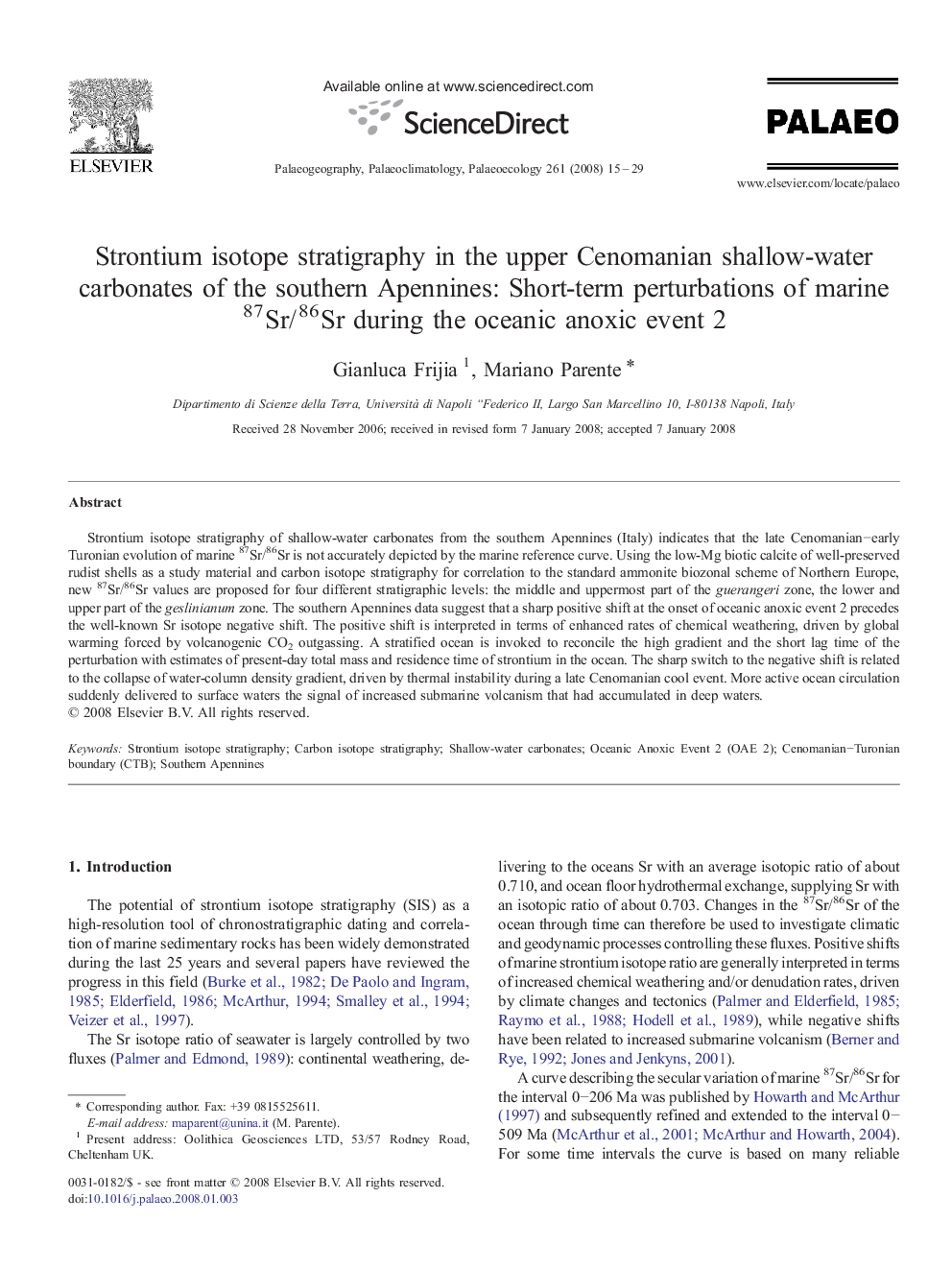| Article ID | Journal | Published Year | Pages | File Type |
|---|---|---|---|---|
| 4468521 | Palaeogeography, Palaeoclimatology, Palaeoecology | 2008 | 15 Pages |
Strontium isotope stratigraphy of shallow-water carbonates from the southern Apennines (Italy) indicates that the late Cenomanian−early Turonian evolution of marine 87Sr/86Sr is not accurately depicted by the marine reference curve. Using the low-Mg biotic calcite of well-preserved rudist shells as a study material and carbon isotope stratigraphy for correlation to the standard ammonite biozonal scheme of Northern Europe, new 87Sr/86Sr values are proposed for four different stratigraphic levels: the middle and uppermost part of the guerangeri zone, the lower and upper part of the geslinianum zone. The southern Apennines data suggest that a sharp positive shift at the onset of oceanic anoxic event 2 precedes the well-known Sr isotope negative shift. The positive shift is interpreted in terms of enhanced rates of chemical weathering, driven by global warming forced by volcanogenic CO2 outgassing. A stratified ocean is invoked to reconcile the high gradient and the short lag time of the perturbation with estimates of present-day total mass and residence time of strontium in the ocean. The sharp switch to the negative shift is related to the collapse of water-column density gradient, driven by thermal instability during a late Cenomanian cool event. More active ocean circulation suddenly delivered to surface waters the signal of increased submarine volcanism that had accumulated in deep waters.
